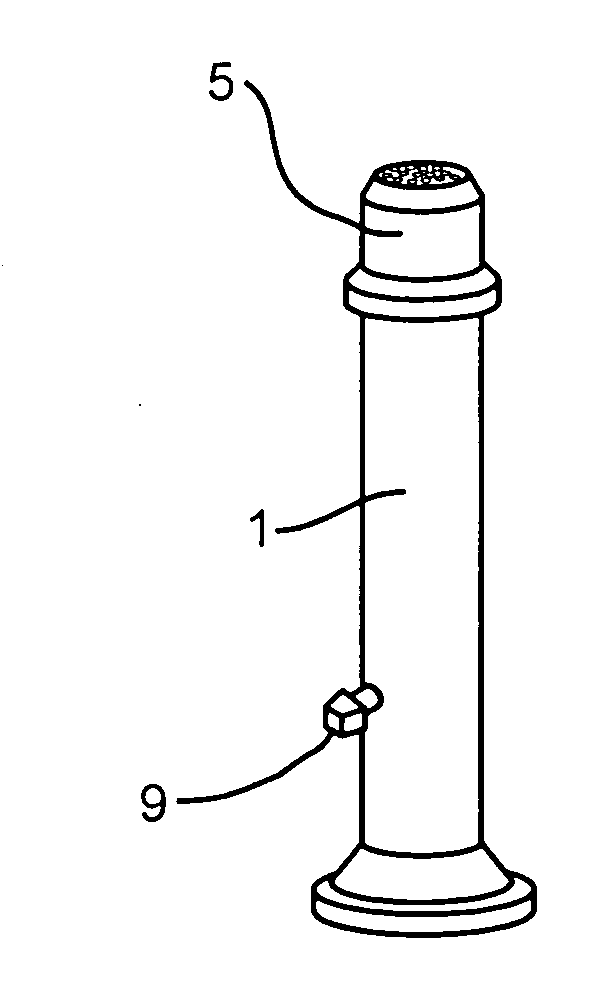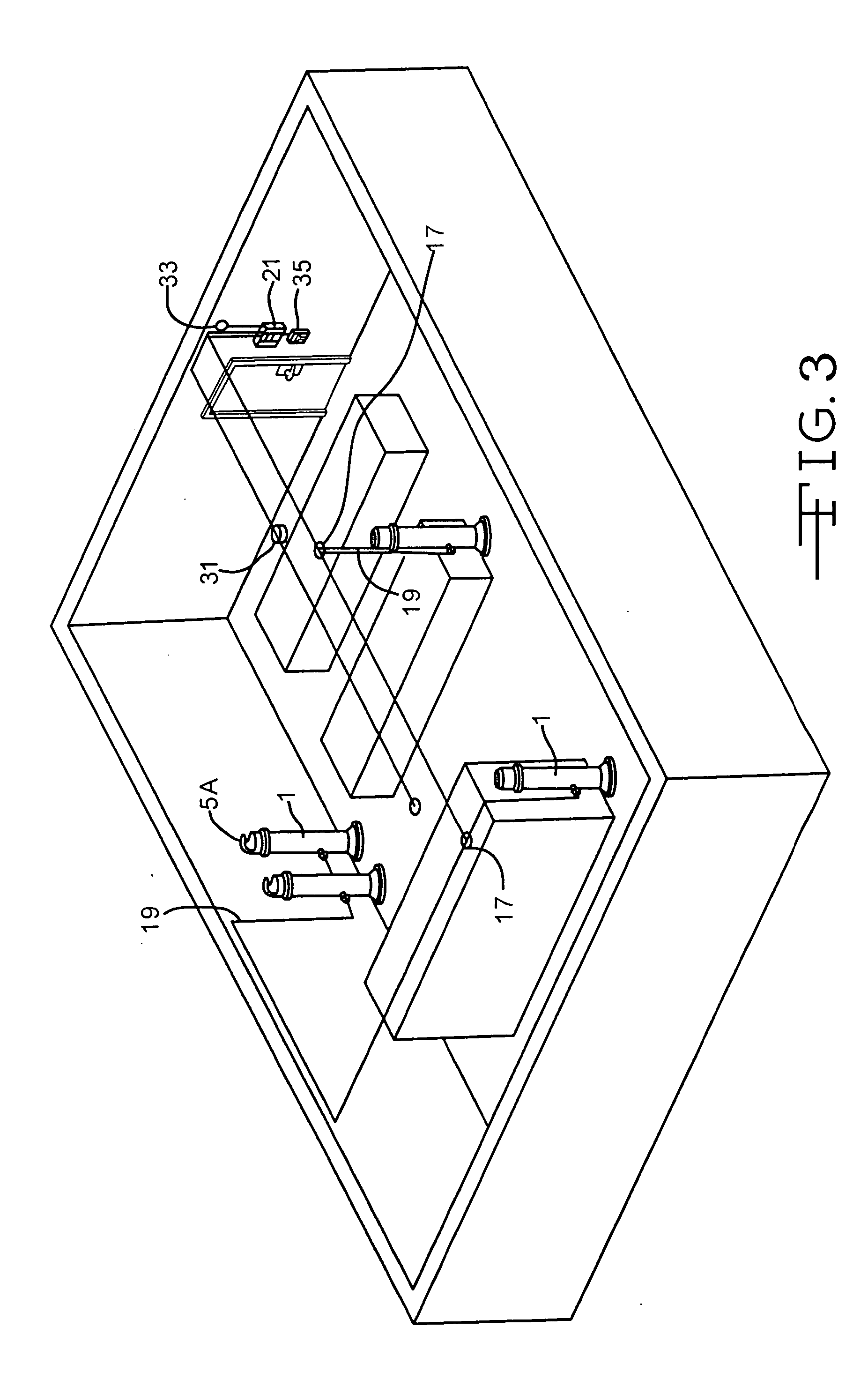System and method for suppressing fires
- Summary
- Abstract
- Description
- Claims
- Application Information
AI Technical Summary
Benefits of technology
Problems solved by technology
Method used
Image
Examples
example
[0051] An oxygen concentration of 13.5% is a desirable target level, to successfully extinguish fires with a sufficient 20% factor of safety as required by regulatory agencies such as the National Fire Protection Association, while maintaining sufficient oxygen levels for occupants for limited evacuation periods. Prior testing of prototype gas generator units has shown successful fire extinguishment with units sized approximately 20 gallons in volume, producing 0.535 kg-moles of nitrogen inert gas, discharged into a 1300 cubic foot room, are equivalent volume to be protected by one standard canister of traditional compressed stored inert gas. Such a unit was not optimized in size in any respect, with copious and un-optimized quantities of cooling bed materials used to cool the discharged nitrogen gas.
[0052] If such an un-optimized unit were prorated in size, including its oversized cooling bed capacity, it can provide a vastly conservative estimate of sizing on individual units and...
PUM
 Login to View More
Login to View More Abstract
Description
Claims
Application Information
 Login to View More
Login to View More - R&D
- Intellectual Property
- Life Sciences
- Materials
- Tech Scout
- Unparalleled Data Quality
- Higher Quality Content
- 60% Fewer Hallucinations
Browse by: Latest US Patents, China's latest patents, Technical Efficacy Thesaurus, Application Domain, Technology Topic, Popular Technical Reports.
© 2025 PatSnap. All rights reserved.Legal|Privacy policy|Modern Slavery Act Transparency Statement|Sitemap|About US| Contact US: help@patsnap.com



